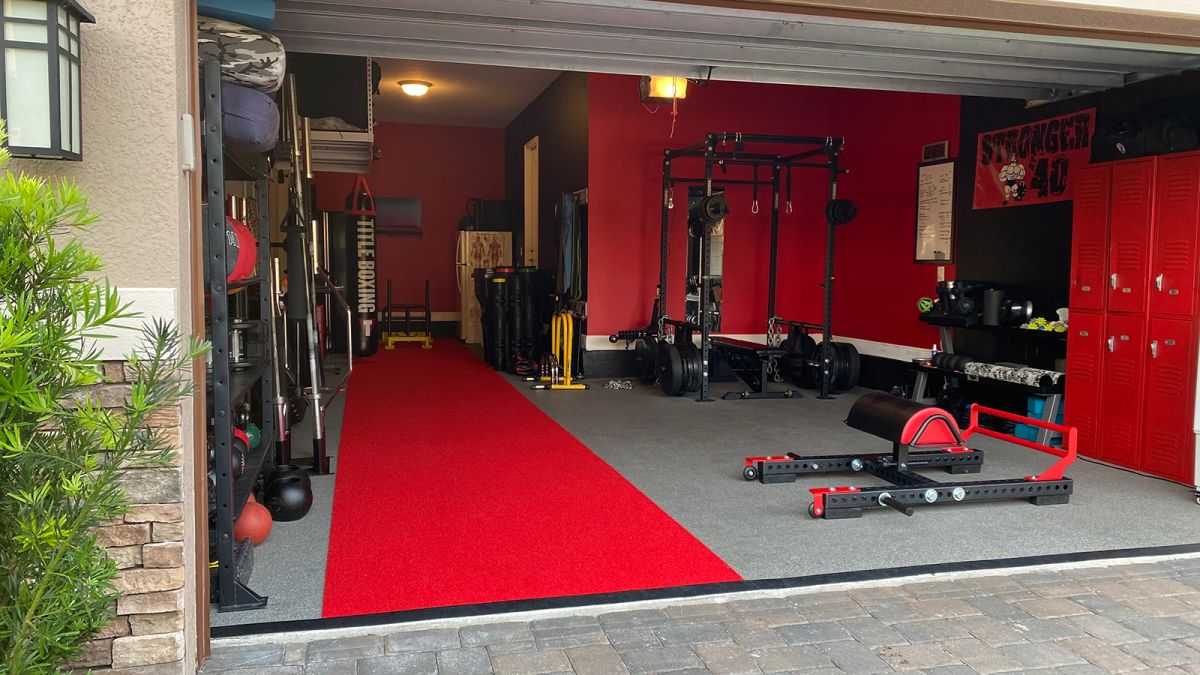Home>Ideas and Tips>A Beginner’s Guide To Starting A Vegetable Garden


Ideas and Tips
A Beginner’s Guide To Starting A Vegetable Garden
Published: October 31, 2024
Learn how to start a vegetable garden with our beginner's guide. Get tips on planning, planting, and maintaining your garden for fresh, homegrown produce.
(Many of the links in this article redirect to a specific reviewed product. Your purchase of these products through affiliate links helps to generate commission for Storables.com, at no extra cost. Learn more)
Starting a vegetable garden can be a rewarding and fulfilling experience, providing you with fresh produce right in your own backyard. Whether you have a small balcony or a large yard, growing your own vegetables can be a great way to save money, improve your health, and connect with nature. In this comprehensive guide, we will walk you through the entire process of starting a vegetable garden, from planning and preparation to planting and maintenance.
Planning Your Vegetable Garden
Before you begin, it's essential to plan your garden carefully. Here are some steps to help you get started:
Read more: A Beginner’s Guide To Indoor Herb Gardening
1. Choose the Right Location
The location of your garden is crucial. You want to choose a spot that receives plenty of sunlight, as most vegetables need at least six hours of direct sunlight per day. Additionally, ensure that the area is well-drained and has good air circulation to prevent diseases.
2. Assess Your Soil
Soil quality is vital for growing healthy vegetables. Test your soil to determine its pH level and nutrient content. Most vegetables prefer a slightly acidic to neutral soil pH (around 6.0 to 7.0). Based on your soil test results, you may need to add amendments like compost or fertilizer.
3. Select the Right Vegetables
Not all vegetables are created equal when it comes to ease of growth and yield. Beginners often find success with easy-to-grow vegetables like tomatoes, cucumbers, zucchini, carrots, lettuce, spinach, and herbs like basil and mint.
4. Consider Your Climate
Different regions have different growing seasons and climate conditions. For example:
- Spring Planting: In temperate climates, spring is an excellent time for planting cool-season crops like lettuce, spinach, and peas.
- Summer Planting: For warm-season crops like tomatoes, peppers, and eggplants, summer is ideal.
- Fall Planting: In regions with mild winters, fall can be a great time for planting cool-season crops again.
Read more: A Beginner’s Guide To Raising Goats
Preparing Your Garden
Once you have chosen your location and selected the right vegetables for your climate, it's time to prepare your garden.
1. Clear the Area
Clear any debris or existing plants from the area where you plan to garden. Remove weeds and till the soil to loosen it up.
2. Build Raised Beds (Optional)
Raised beds can be beneficial if you have poor soil or limited mobility. They also help with drainage and make it easier to reach all parts of the bed without straining your back.
3. Lay Down Mulch or Compost
Mulch or compost can help retain moisture in the soil and suppress weeds. Organic mulches like straw or wood chips work well.
Read more: A Beginner’s Guide To Minimalist Living
Tools of the Trade
Having the right tools can make gardening much easier and more enjoyable.
1. Gardening Gloves
Gardening gloves protect your hands from thorns, dirt, and other potential hazards.
2. Trowel or Small Shovel
A trowel or small shovel is essential for digging holes for plants and mixing soil amendments.
3. Rake
A rake helps level out mulch or compost and remove debris from the surface of your garden beds.
4. Watering Can or Hose
A watering can or hose ensures that your plants receive adequate water without overwatering them.
5. Fertilizer
Fertilizer provides essential nutrients for plant growth. Organic fertilizers like compost tea are excellent choices for beginners.
Planting Your Vegetables
Now that your garden is prepared, it's time to plant your vegetables!
1. Follow Seed Package Instructions
If you're starting from seeds, follow the package instructions for sowing depth and spacing recommendations.
Read more: How To Start An Indoor Garden For Beginners
2. Plant Seedlings Correctly
If you're using seedlings, dig holes slightly larger than the pot they're in and gently remove them from their pots before placing them in their new home.
3. Water Thoroughly After Planting
Watering thoroughly after planting ensures that the soil settles around the roots of your plants, helping them establish themselves quickly.
Succession Planting
Succession planting is a technique that allows you to maximize production during seasonal transitions by planting multiple crops at different times throughout the growing season.
1. Plant Quick-Growing Crops First
Plant quick-growing crops like radishes or lettuce first so they mature before slower-growing crops like tomatoes or carrots take over.
2. Stagger Plantings Every 2-3 Weeks
Stagger smaller plantings of the same crop every 2-3 weeks to extend the harvest season.
3. Choose Varieties with Different Maturity Dates
Choose varieties of vegetables like beans, squash, and tomatoes with different maturity dates (from early to late) to extend the harvest period even further.
Fire-Wise Gardening
Fire-wise gardening involves choosing plants that are less likely to contribute to wildfires and creating a defensible space around your home.
1. Clear Defensible Space Around Your Home
Clear a ring of defensible space around your home by removing flammable materials like dead leaves or branches.
Read more: How To Fix E2 Error In A Washing Machine
2. Choose Fire-Resistant Plants
Choose fire-resistant plants such as California redbud trees, coast live oaks, succulents like agaves and aloes, shrubs like cistus (rockrose) and salvias, ground covers like sedum and dymondia.
Cutting Gardens
A cutting garden is a special type of garden designed specifically for growing flowers that can be cut and used in arrangements or bouquets.
1. Choose Easy-to-Grow Blooms
Choose easy-to-grow blooms like 'Cut and Come Again' Zinnias which bloom endlessly all summer; Cosmos Binpinnatus which produces a mix of pink, crimson, and white flowers over ferny foliage; 'Color Palette Cupid' Sweet Peas which decorate a 10-inch cascading bush with pastel flowers.
Herbal Tisanes
Herbal tisanes are teas made from fresh herbs grown without pesticides. They offer a refreshing drink that speaks directly to season and place.
1. Rinse Fresh Herbs
Rinse a few small handfuls of fresh herbs like mint, thyme, lemon verbena, or basil before steeping them in boiling water with a bit of honey for added flavor.
2. Add Thin Slices of Fruit or Citrus Peel
Add thin slices of fruit or citrus peel for even more flavor in your herbal tea.
Maintenance Tips
Maintaining your vegetable garden requires regular attention but doesn't have to be overwhelming.
1. Water Regularly
Water regularly but avoid overwatering which can lead to root rot and other issues.
Read more: A Guide To Starting Your Own Flower Garden
2. Mulch Around Plants
Mulch around plants helps retain moisture in the soil while suppressing weeds which compete with your vegetables for resources like water and nutrients.
3. Monitor for Pests
Monitor your garden regularly for pests like aphids, slugs, or snails which can damage your crops significantly if left unchecked.
4. Use Organic Pest Control Methods
Use organic pest control methods whenever possible such as introducing beneficial insects like ladybugs which prey on aphids naturally without harming other beneficial organisms in your ecosystem.
Conclusion
Starting a vegetable garden is an exciting journey filled with opportunities for growth both literally and metaphorically By following these steps—from planning through maintenance—you'll be well on your way towards enjoying fresh homegrown produce while connecting deeply with nature around you every step along the way!
Additional Resources:
- Woerner Companies: Offers comprehensive guides on starting vegetable gardens including tips on soil preparation and plant selection.
- Garden Gate Magazine: Provides top choices for 2025 including beginner-friendly vegetables like zucchini and tomatoes.
- Sonoma Magazine: Offers an ultimate guide to spring planting in Sonoma with specific recommendations tailored to regional climate conditions.
By combining these resources with practical advice outlined above, you'll find yourself cultivating green like never before Happy gardening
Was this page helpful?
At Storables.com, we guarantee accurate and reliable information. Our content, validated by Expert Board Contributors, is crafted following stringent Editorial Policies. We're committed to providing you with well-researched, expert-backed insights for all your informational needs.







0 thoughts on “A Beginner’s Guide To Starting A Vegetable Garden”